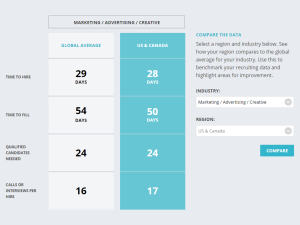— October 30, 2017

3dman_eu / Pixabay
Organizations that go to market via indirect channels tend to understand the value in having a channel incentive program to motivate sales representatives, partners, or dealers. If your organization does not yet have such a program in place but is looking to implement one, here are ten key things to consider during the planning and launch phases.
Identify clear objectives that can be tracked and measured.
The objectives you set for your incentive program should focus on both quantitative and qualitative measures. Quantitative elements include enrollment rates, year-over-year or month-over-month sales growth, product sales, market share increase, and overall ROI. Qualitative measures can include participant satisfaction and increases in brand awareness or mindshare. Regardless of the objective, each should be identified upfront and reported on a frequent basis so that corrective action can be taken if required.
Research competitor programs and offerings.
It’s never a good idea to just take the “me too!” approach. Many companies rush to develop an incentive program because their competitors have one in place. However, it helps to fully examine what is working on the competitor side. Have they outpaced you in sales because they have a tiered SPIFF in place for a certain product? Are they running campaigns in a region where you are a leader? This research ensures that your program stands apart from the competition and cuts through the clutter.
Gain insight from program participants through research.
Disconnects often occur when companies think they know what their prospective participants want. Have you ever stood in line at Starbucks and watched everyone order the same coffee? It just doesn’t happen! Informal research or small focus groups can provide valuable insight when designing an incentive. This effort can also build support and generate buy-in after the program launches.
Start simple and stay focused on enrollment and initial engagement.
Add complexity after you have them hooked. Keeping things simple will ensure that participants easily engage and quickly understand what they need to do to be successful. This is especially important for companies who have never had a channel incentive program in place, as the introduction of an overly complicated program can prove daunting to the end users.
Make it easy for users to participate.
Make the user experience positive and easy; it should never take an extreme amount of effort to participate in your incentive program. Many participants disengage if the process is too difficult or time consuming. Make sure the buzz is “this is so easy and engaging to use!” vs. “I don’t have time to do one more thing.”
Don’t be afraid of creating a little competition among users.
Nobody enjoys competition more than salespeople. An easy way to increase engagement is to incorporate leaderboards and competitive challenges. Make sure top performers are recognized. Concerned your dealers may not want to publicly highlight their top performers? Allow participants to create aliases that don’t disclose their name and location.
Incorporate training as a qualifier to participate or as a bonus.
Data shows that training increases sales effectiveness and success. Incorporating training as a qualifier into an incentive program ensures compliance and maximizes the investment in a learning management system (LMS). The more your indirect sales reps learn about your products, the more likely it is for your brand to be top of mind during the last three feet of the sale.
Communicate often with both key stakeholders and the end users.
A channel incentive program cannot be a success without buy-in from key internal stakeholders. Keep them apprised of what’s going on, what trends you’re seeing, and impact on the bottom line. For end users, leverage your incentives platform to communicate new promotions, send targeted emails to individual users, and overall maintain consistent messaging to those who are participating.
Engage your internal salesforce as program ambassadors.
Use your internal salesforce as brand ambassadors to promote the incentive program and engage participants. Many companies create an incentive within an incentive and reward their internal sales force based on participant enrollment, sales performance, and other metrics that ensure they continue to build relationships with their customers (the indirect sales reps or dealers).
Be flexible and willing to course correct as necessary.
It’s imperative to be able to apply learnings on an ongoing and near-real-time basis. Be open to listening to feedback from participants and other key stakeholders, and review the data regularly. Making changes on an ongoing basis will keep the program fresh and ensure continued success.
Business & Finance Articles on Business 2 Community
(92)







